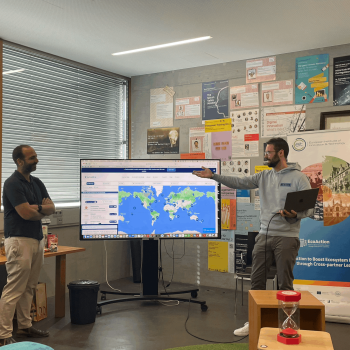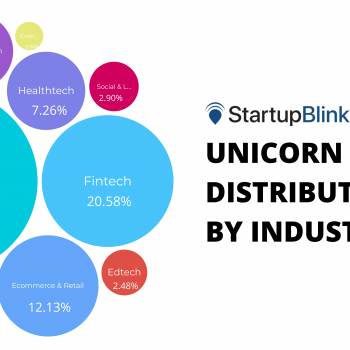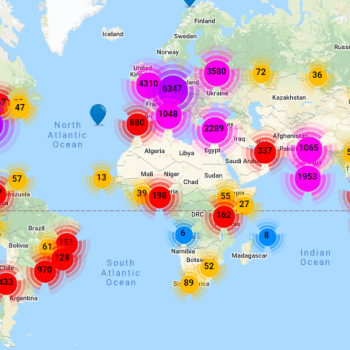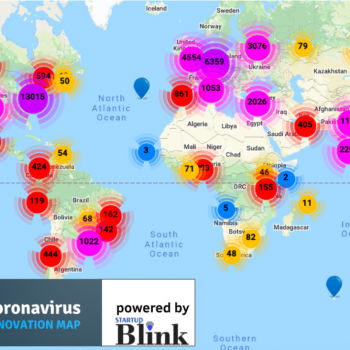Whether you’re in charge of a startup program, organizing an event, or overseeing a startup organization, your success as startup ecosystem stakeholders hinges on your ability to effectively connect with the right audience. StartupBlink’s Marketing Packages offer valuable resources designed to engage startups, entrepreneurs, and other stakeholders.
In this post, we’ve created a Marketing Guide for Startup Ecosystem Stakeholders. The guide includes:
- How to Generate Leads for Startup Ecosystem Stakeholders?
- How to Boost Brand Visibility and Awareness for Startup Ecosystem Stakeholders
- Advertising Techniques for Startup Ecosystem Stakeholders
How to Generate Leads for Startup Ecosystem Stakeholders?
At the core of any successful endeavor lies lead generation – the process of attracting and nurturing potential customers who have shown interest in what you offer. For startup programs, events, and organizations, targeting the right leads is essential for turning interest into action. Here’s how you can achieve this:
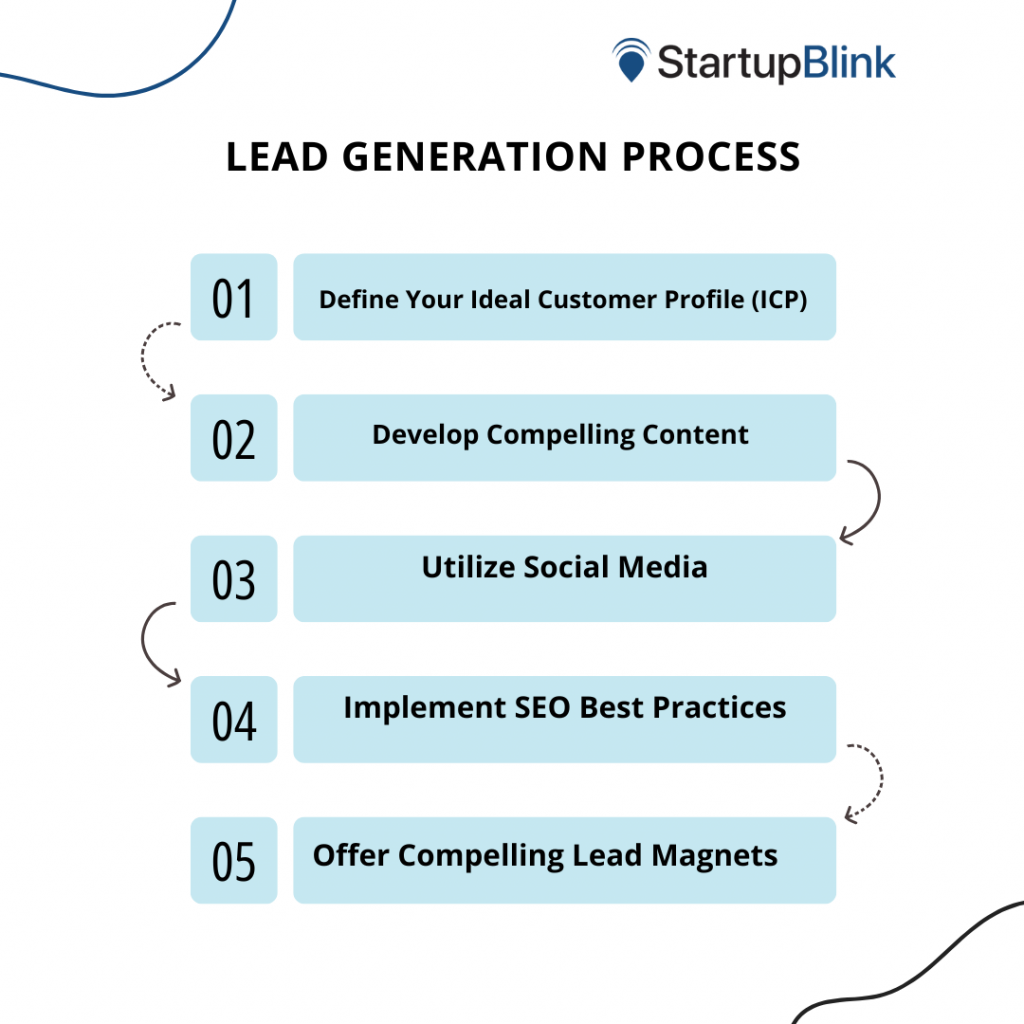
1. Define Your Ideal Customer Profile (ICP)
Gain a deep understanding of your audience by creating a detailed ideal customer profile that includes startups, investors, scale-ups, governments, private sector entities, and ecosystem developers. Identify their challenges and consider how your program, event, or product can provide solutions. Craft your messaging to resonate with their needs.
For startup ecosystem stakeholders, it’s important to focus your efforts on channels that engage with startup communities. An example is StartupBlink, a platform visited by thousands of startups, investors, accelerators, coworking spaces, and government officials daily. Partnering with us offers a strategic way to execute a precise and targeted marketing campaign, directly reaching the audience you want to connect with.
2. Develop Compelling Content
Create high-quality content that showcases your expertise and addresses the challenges your audience faces. This could include informative blog posts, in-depth whitepapers, insightful reports, engaging webinars, captivating videos or either sponsoring nor featuring a podcast episode. Offer valuable insights, actionable advice, and explore current industry trends. By doing so, you establish your brand as a thought leader and a trusted solution provider.
At StartupBlink, we support our partners through lead collection popups, dynamic monthly webinars, summits, and podcasts. These platforms provide opportunities to gain attention across various channels, boosting your visibility and traction.
3. Utilize Social Media

Actively engaging with your partners is crucial for expanding your influence. Social media platforms serve as powerful tools for increasing brand visibility and nurturing potential leads. To effectively harness their potential, develop a robust social media strategy that includes consistent posting, active engagement with your target audience, and strategic use of relevant hashtags.
4. Implement SEO Best Practices

Enhance your online presence through effective SEO tactics. Follow recommendations from tools like SEMRush, which includes using relevant keywords in your content to improve search engine ranking. Build strong connections with reputable websites through backlinks to enhance your site’s reputation and search result rankings. StartupBlink`s high domain authority helps your organization to increase credibility on search engines. As explained by SimilarWeb, “if your site has a large number of high-quality external links, your domain authority score should be on the higher end of the scale.” Lastly, ensure your website is mobile-friendly for a better user experience and higher search engine ranking.
How to Boost Brand Visibility and Awareness for Startup Ecosystem Stakeholders?
Brand visibility is closely linked to lead generation. Your startup program, event, or organization must stand out and make a lasting impression. Here’s how you can achieve that:
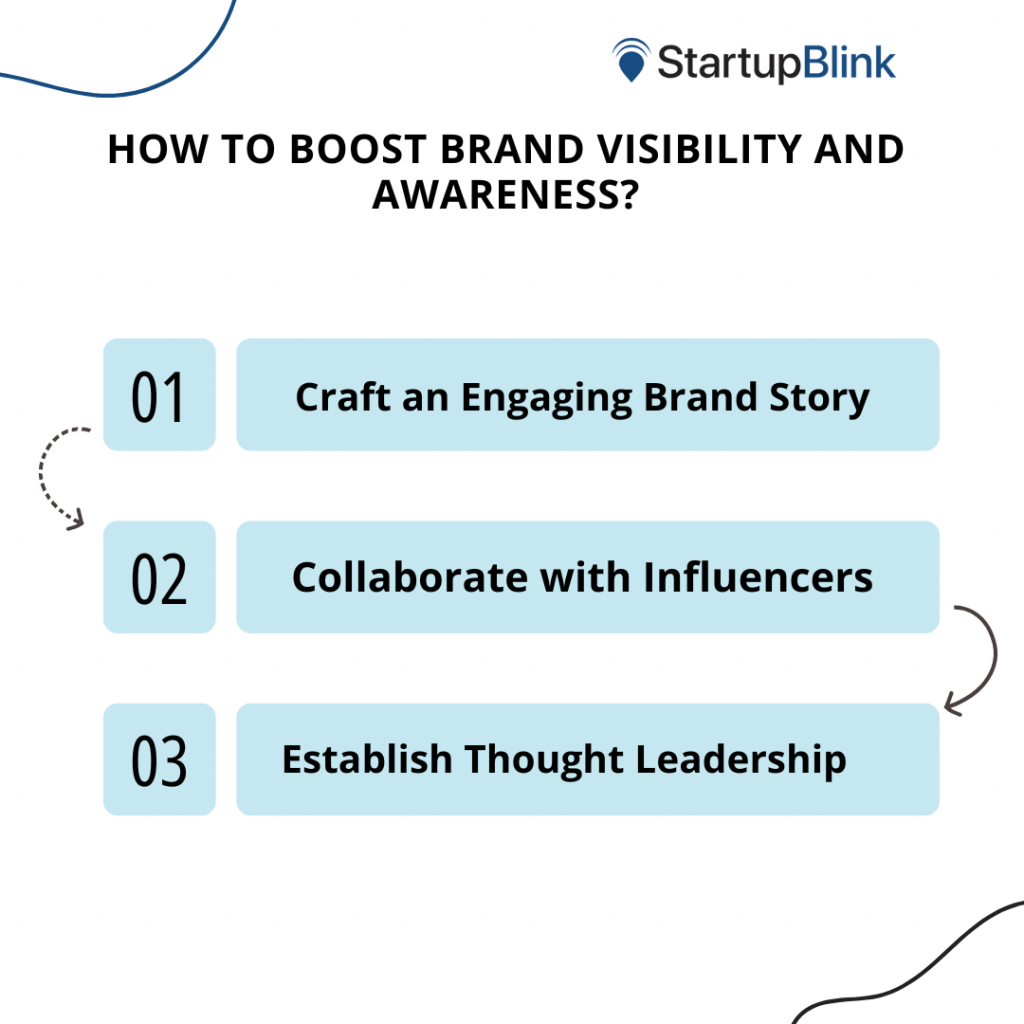
1. Craft an Engaging Brand Story
Connect with your audience through storytelling. Develop a compelling narrative that highlights your organization’s mission, values, and the impact you aim to achieve. Consistently communicate this story across all marketing channels.
2. Collaborate with Industry Experts
Partner with industry experts or influencers to expand your brand’s reach. Their endorsement can introduce your startup program, event, or product to a wider audience. For instance, if you’re organizing a startup event, involve top startups and thought leaders as keynote speakers or workshop hosts. Word-of-mouth influence plays a significant role in purchase decisions for B2B companies, according to Exploding Topics.
3. Establish Thought Leadership
Position yourself as an industry authority by featuring on relevant podcasts, contributing guest posts, speaking at conferences, or hosting webinars. Thought leadership enhances your brand’s credibility and attracts potential leads, especially if your initiative is new. To quickly capture the attention of your potential audience, collaborate with reputable channels.
Advertising Techniques for Startup Ecosystem Stakeholders
While organic methods are crucial for building a strong foundation, advertising offers a fast-track route to gaining traction and increasing brand visibility. In this section, we’ll explore advertising in-depth, discovering how you can leverage its power to propel your startup program, event, or product forward.
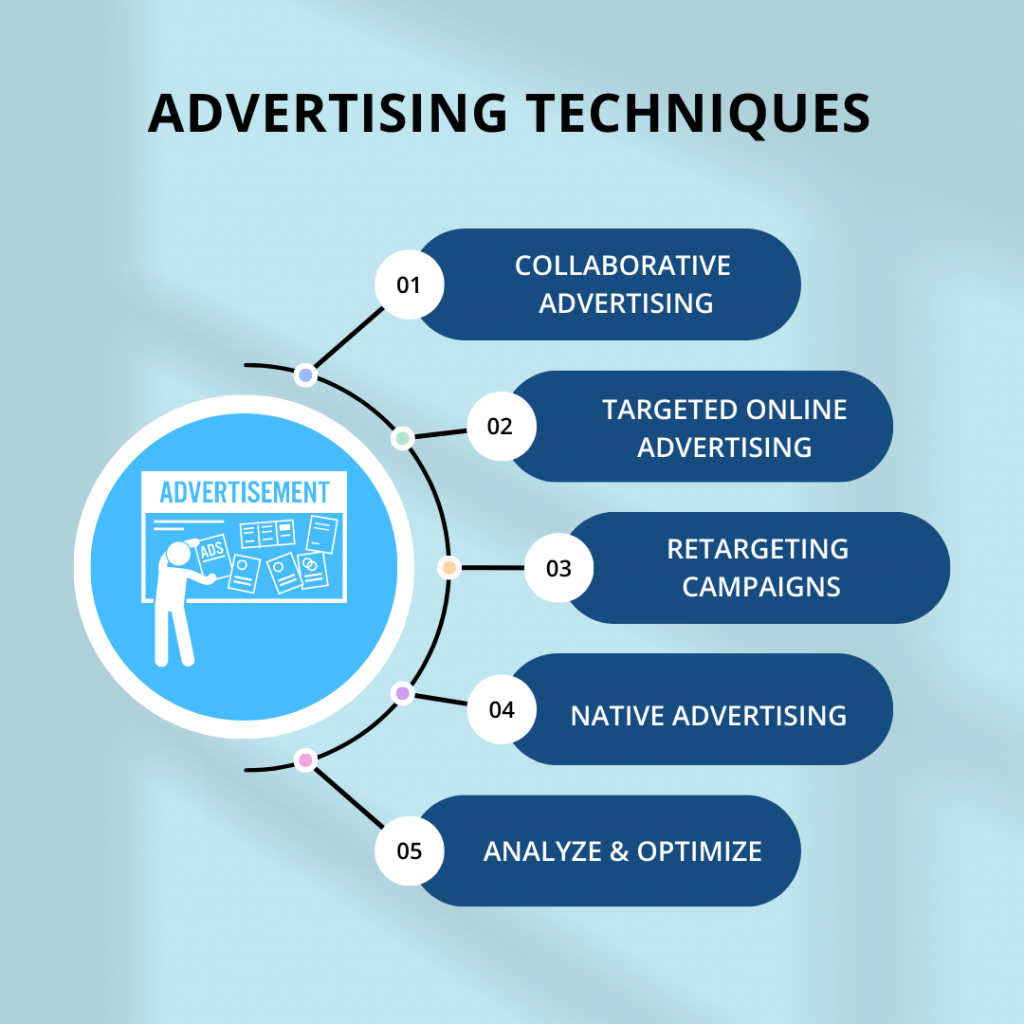
1. Collaborative Advertising
Collaboration is key to innovation, and advertising is no exception. Consider partnering with complementary brands or organizations to create joint advertising campaigns. This shares costs and resources while expanding your reach to a broader audience.
For instance, if you’re organizing a startup-focused event, collaborating with a well-known tech publication can enhance your brand’s visibility within the tech community. Collaborative advertising combines the strengths of both parties, creating synergy that resonates with a wider range of potential leads.
2. Targeted Online Advertising: Precision Targeting
Online advertising has transformed how businesses connect with their audience. Platforms like Google Ads and social media advertising offer tools for reaching your specific target audience precisely. However, these are not the sole channels for targeted marketing. You can also find platforms in which your target audience visits and advertise there. Imagine showcasing your startup program directly to ambitious entrepreneurs, or your groundbreaking event to innovation enthusiasts. This level of precision ensures your message resonates with those most likely to engage and convert.
Utilize demographic data, interests, behaviors, and geography (such as national, regional and global) to customize your ads for the right people at the right time. By focusing on your ideal customer profile, you maximize the impact of your advertising budget.
3. Retargeting Campaigns: Nurturing Connections
Retargeting, the practice of showing ads to users who have interacted with your website or previous ads, is a potent tool for nurturing relationships with potential leads. These reminders keep your brand in their minds, encouraging them to take the next step.
4. Native Advertising
In a saturated advertising landscape, capturing your audience’s attention is challenging. Native advertising integrates your promotional content seamlessly with the platform, creating a more natural and less intrusive experience for users.
Imagine creating an article that offers insightful tips relevant to your industry, subtly highlighting the benefits of your startup program or event. By aligning your content with what your audience is already engaging with, you create an authentic and engaging interaction that leaves a lasting impression.
5. Analyze and Optimize: Continuous Improvement

Monitor the performance of your ad campaigns by tracking metrics like click-through rates, conversion rates, and engagement levels. Choose a platform that provides detailed insights into these metrics.
Experiment with different ad formats, headlines, visuals, and targeting parameters to find the winning formula for your startup program, event, or product. A/B testing can refine your approach, ensuring your advertising efforts yield the desired results.
By applying the strategies outlined in this guide, you’re equipped to navigate the dynamic landscape of marketing to startup ecosystem stakeholders. As you engage in lead generation, boost brand visibility, and leverage advertising techniques, you’ll be better positioned to connect with your target audience, foster relationships, and drive the success of your startup program, event, or organization. StartupBlink with its Marketing Packages stands ready to support you on this exciting journey, offering the resources and avenues needed to promote your startup organization, event and program. We are ready to assist you on your exciting venture with its advertising options designed for various stakeholders in the startup ecosystem. We provide the necessary tools and channels to promote your startup, event, and program.



